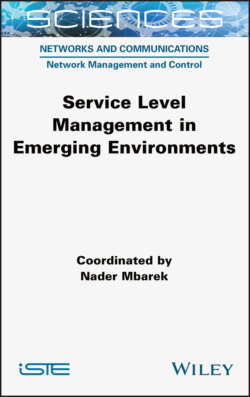Читать книгу Service Level Management in Emerging Environments - Nader Mbarek - Страница 41
1.5.2.1.2. Research projects
ОглавлениеVarious projects and research studies have proposed the integration of QoS into the device layer of IoT architecture using mechanisms that have been adapted for this environment.
OpenIoT, a European project funded by FP7 (December 2011–December 2014), specifies different parameters for QoS in the IoT (Serrano 2014). These parameters are varied and can be divided into several categories. First of all, we have the general parameters such as the quality of the sensors that determine the accuracy and sensitivity of the measurements, and also the energy consumption. In addition, OpenIoT also takes into consideration the amount of data produced by a physical sensor, the coverage of the network of objects, and the trust correlated to the sensor quality. On the other hand, various parameters related to the network of objects in the device layer must be taken into consideration, for instance, lifetime, delay and jitter. Different metrics are considered to quantify each QoS parameter specified in the OpenIoT project. For example, the parameter related to energy consumption is quantified using battery level. Finally, this project makes it possible to apply QoS using a QoS Manager that can collect information on different parameters, which will allow the manager to take decisions in order to improve the quality delivered to users (Serrano 2014).
The research work carried out in Nef et al. (2012) concerning QoS guarantee in the IoT suggests that the different IoT applications be classified according to three service models, i.e. Open Service Model, Supple Service Model and Complete Service Model. Each category will correspond to a physical topology for the implementation of the sensors. The Open Service Model refers to interactive, non-real-time and non-critical applications; the Supple Service Model corresponds to interactive, Soft Real Time and critical applications; the Complete Service Model corresponds to interactive, Hard Real Time and critical applications. The authors then classified applications belonging to different domains according to these three models. In addition, this work has matched the proposed service models to physical topologies (star topology and random topology) at the device layer to meet the needs of each model. Indeed, applications belonging to the “Complete” model must be provided using a physical star topology for shorter delays. However, applications belonging to the “Open” model must be provided through a random physical topology for better energy consumption.
Other research has focused on prioritizing access to the shared communication channel between IoT objects to ensure there is a differentiation of traffic when sending data to gateways. The research work carried out in Sayarifah et al. (2015) defines different queues and a scheduler in an object in order to prioritize the processing of priority flows. Other research has attempted to adapt Slotted Carrier Sense Multiple Access/Collision Avoidance (CSMA/CA) access algorithms to ensure that QoS is guaranteed. The research conducted in Feng et al. (2013) adapted the IEEE 802.15.4 standard, and in particular the CSMA/CA algorithm, by integrating a QoS mechanism. This new access method, called SDA-CSMA/CA, is based on the specification of different values for CSMA/CA variables (Contention Window [CW] and Maximum Backoff Exponent [BE]) to create different priorities depending on the types of traffic. Thus, three priority levels are considered with SDA-CSMA/CA. In this context, smaller CWs and narrower BE intervals (minimum BE and maximum BE) are assigned to high priority traffic. As a result, important messages have a greater chance of accessing the channel with reduced waiting times.
